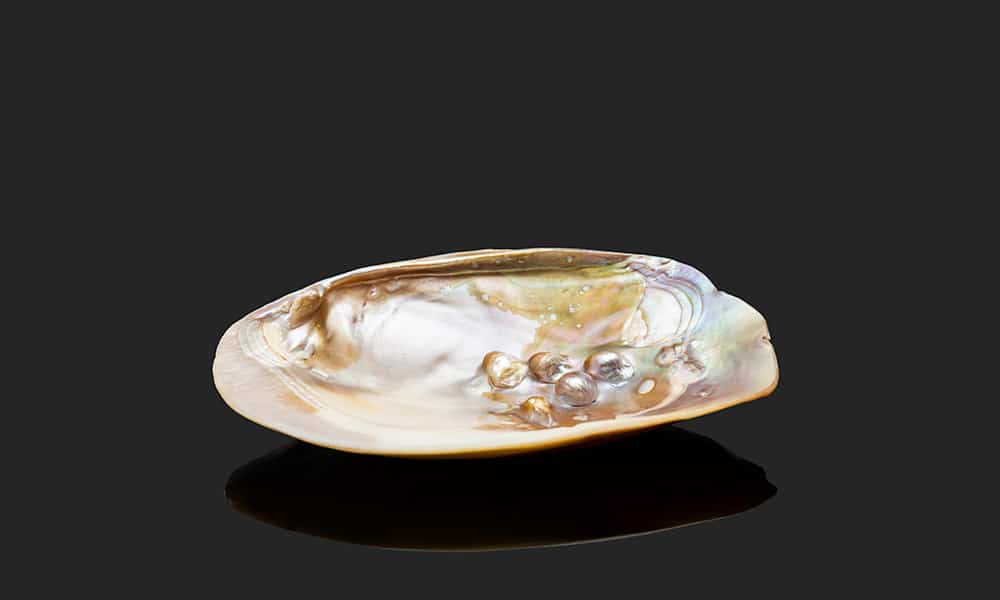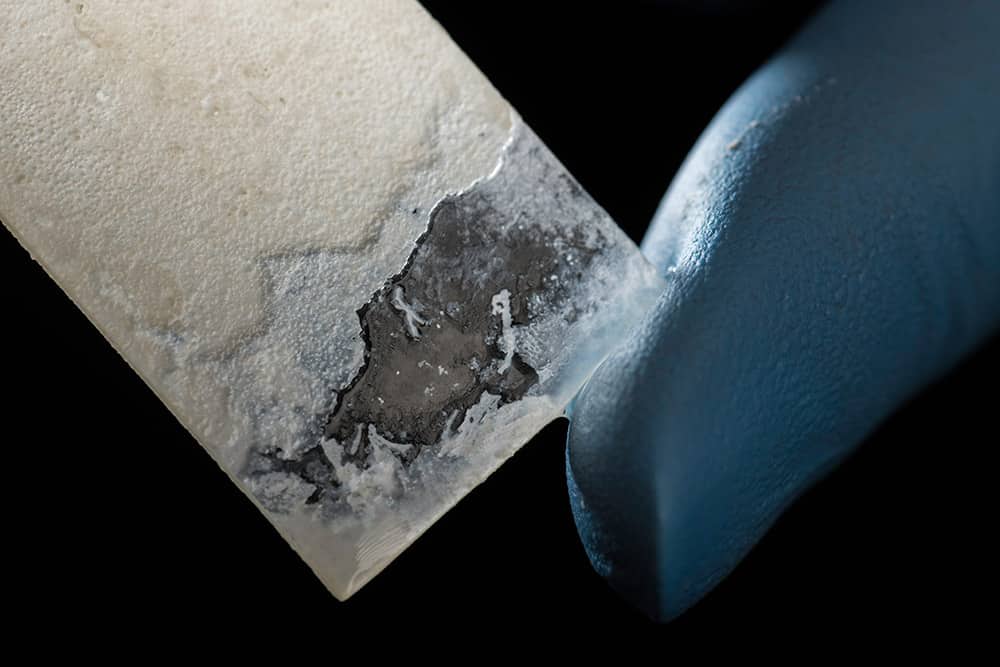Mother-of-pearl is one of the most intriguing and intensely studied materials found in nature. Also known as nacre, it is a natural composite, consisting of layers of protein-and mineral-based substances. It is lightweight, immensely tough and stiff, providing an important component within the calcium carbonate-based protective shell of molluscs.
Materials scientists have been trying for over 30 years to produce synthetic nacre, but have only succeeded using expensive equipment, extreme temperatures, high pressures and often toxic chemicals.
"Many people creating artificial nacre use polymer layers that are only soluble in non-aqueous solutions, an organic solvent, and then they have this giant bucket of waste at the end of the procedure that has to be disposed of," explained Anne Meyer, a biologist at the University of Rochester in New York, who has led a team that has developed a biologically-based route to synthetic nacre that they believe may overcome previous problems.

The Rochester team’s method avoids harsh chemicals, instead being based around bacteria. Moreover, the starting material is urea: a nitrogen-containing compound found in urine and commonly used in fertilisers. In a paper in the journal Small, Meyer and the team explain how they use two strains of bacteria to replicate the layered structure of nacre.
The methodology is very simple. The first stage is to place a glass or plastic side into a beaker containing the bacterium Sporosarcina pasteurii, a calcium source, and urea. This triggers the crystallisation of calcium carbonate, the inorganic phase of nacre. They then place the slide in the solution containing another bacterium, Bacillus licheniformis, and place slide and beaker into an incubator. This triggers the formation of a layer of a sticky protein on top of the calcium carbonate. Each layer is approximately 5µm thick, and alternating the bacterial bath causes a layered structure to build up. Currently, each double layer takes around a day to form.
“We’re trying new techniques to make thicker, nacre-like materials faster and that could be the entire material itself,” Meyer said.

The material is biocompatible and therefore suitable for artificial bones and surgical implants, such as pins to fix difficult fractures.
“If you break your arm, for example, you might put in a metal pin that has to be removed with a second surgery after your bone heals. A pin made out of our material would be stiff and tough, but you wouldn’t have to remove it,” Meyer said. Moreover, seeing as material is stiff and tough, while also being lightweight, it could be a construction material for aircraft, boats and space vehicles, where the weight-to-strength ratio is crucial.
Travelling further into space, Meyer has suggested it could form the basis of permanent structures on the moon and other planets to shelter and house crewed missions. The only necessary materials to take would be small amounts of bacteria and water, as the urea would be extracted from the crew’s urine.
This raises the question of how long it might take for a crew to produce sufficient urine to build their own shelter, and what would be the practicalities of forming the correct shapes to build such a structure. Meyer told The Engineer that such questions are already being considered by her team.
“To make our nacre have a certain shape, our process will deposit a nacre coating onto any shape of substrate that we place into the bacterial cultures. So, we could use differently shaped pieces of plastic. We have also been able to deposit our material onto 3D-printed pieces of PLA plastic that were curved in different ways. So far, we have only been able to make nacre that grows straight up from a surface, and covers the entire surface. But, my lab has also been developing its own 3D printers that can print bacteria. As a next step we would love to combine these techniques to make 3D-printed nacre, that could have any 3D shape.”
Learn more in this video:
Moreover, Meyer commented that the average human produces 342mmol of urea in the urine per day. If all of this could be extracted – which raises the prospect of being able to reprocess the remaining liquid back into drinkable water, reducing the amount of water that would need to be taken on the mission – it would take 2.2 days of “output” to produce enough urea to make the same amount of nacre the team produced for its paper (20 layers covering the area of a microscope slide).
“I don't really know how thick a layer of nacre that you would want to have to shield a moon habitat!” she said “In natural seashells, nacre thickness can vary widely - in blue mussel shells (which are quite thin) it is on the order of 0.1mm. Our lab is also actively working on developing new techniques to make nacre-inspired material faster and in larger/thicker samples.”
It would clearly take a considerable amount of drinking and peeing to produce “Seashell Base”, but what astronaut wouldn’t want to live in such lustrous surroundings?




Swiss geoengineering start-up targets methane removal
No mention whatsoever about the effect of increased methane levels/iron chloride in the ocean on the pH and chemical properties of the ocean - are we...